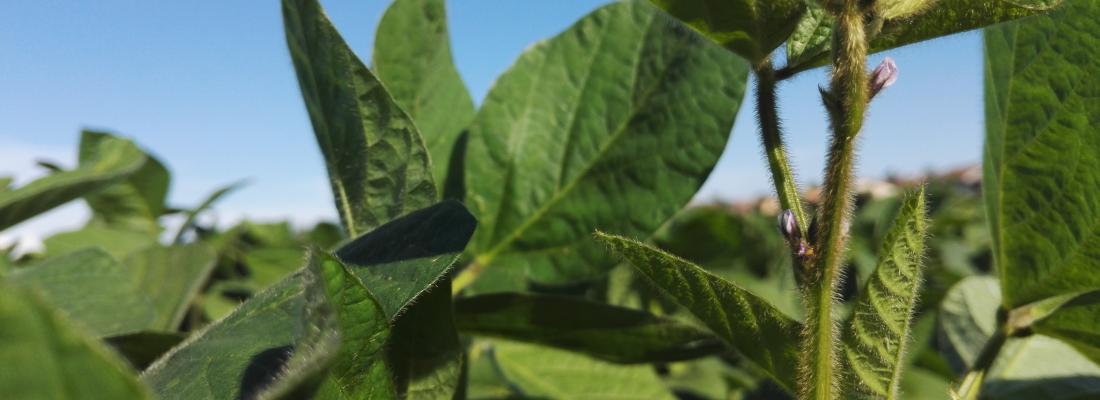Agroecology Reading time 3 min
Understanding soybean biology better to boost production in France and Europe
Published on 01 April 2020

Soybean crops are gaining ground in the 28-member European Union. But yields of 2.7 million tonnes in 2018, compared with imports of around 40 million tonnes, leaves a lot of room for growth. Europe has a long way to go before soybean production can fulfil the food needs of both humans and animals. The increase in land area used for soybean crop production must take climate change into account. While the risk of drought increases in southern zones, rising temperatures could be seen as an opportunity to grow the crop further north. To support the development of the soybean sector, INRAE has studied three scenarios:
- Sow early to cut back on irrigation water in summer
- Extend soybean crops to the north
- The possibility of double cropping in summer after small-grain cereals
“To reach these goals, we must have a good grasp of how soybeans respond to a wider range of thermal conditions and photoperiods”, says Céline Schoving, a doctoral candidate at INRAE and author of the study. Soybean is a thermophilic plant that does not require lengthy light exposure; how well it grows depends on photoperiods and temperatures. Depending on their needs in terms of heat and light exposure, soybean varieties are classified into different maturity groups. Today, 13 maturity groups exist throughout the world, ranging from very early to very late.
Studying the impact of climate variations on soybean crops
In order to find new varieties that will adapt to new contexts, scientists must first get a better understanding of how different genotypes respond to photoperiod-temperature interactions, and better identify the links between when benchmark stages start in different photoperiods and temperatures. To do so, the researchers carried out two experiments with varieties from very different maturity groups.
The first consisted of germinating seeds in an incubator to determine cardinal temperatures, i.e. the lowest possible temperature below which soybeans will not grow; optimal temperatures for growth; and maximum temperatures above which the crop will not grow.
In the second experiment, plants were grown in pots on an outdoor platform and scientists recorded the dates when benchmark stages appeared in relation to climatic conditions for six different sowing dates. This provided a simple way of identifying different responses to variations in temperatures and light/darkness periods.
Modelling to stay a step ahead of global changes
An algorithm was drawn up based on all the data collected that predicts the date when benchmark stages begin according to variety and sowing date. It was developed with Professor Claudio Stöckle (Washington State University), who was working in the INRAE lab as a guest at the time. According to Céline Schoving, “These studies have shown that it’s more advantageous to define maturity groups in terms of photothermal accumulation necessary to complete a cycle than to compare the lifespan of cycles (in days) for a single sowing date”.
The algorithm will allow researchers to evaluate varietal performance in different scenarios of climate change and sowing dates, and ultimately to shape the behaviour of the crop. Studies continue in order to define new cultivation zones and growing methods, with varieties adapted to early, or on the contrary late, sowing dates.
These studies came about from the “Sojamip” research project, bringing together several partners: Euralis Semences, RAGT2n, Caussade Semences, Terres Inovia, Terres Univia, and INP-Purpan. Financial support was provided by the Occitanie / Pyrénées-Méditerranée region which also co-funded a thesis project with Terre Inovia.
Trials were carried out with the technical support of the Arable Crops experimental unit, Nicolas Capoul, Céline Colombet, Michel Labarrère, Damien Marchand, and Hugo Quintana.
Schoving C, Stöckle CO, Colombet C, Champolivier L, Debaeke P and Maury P (2020)
